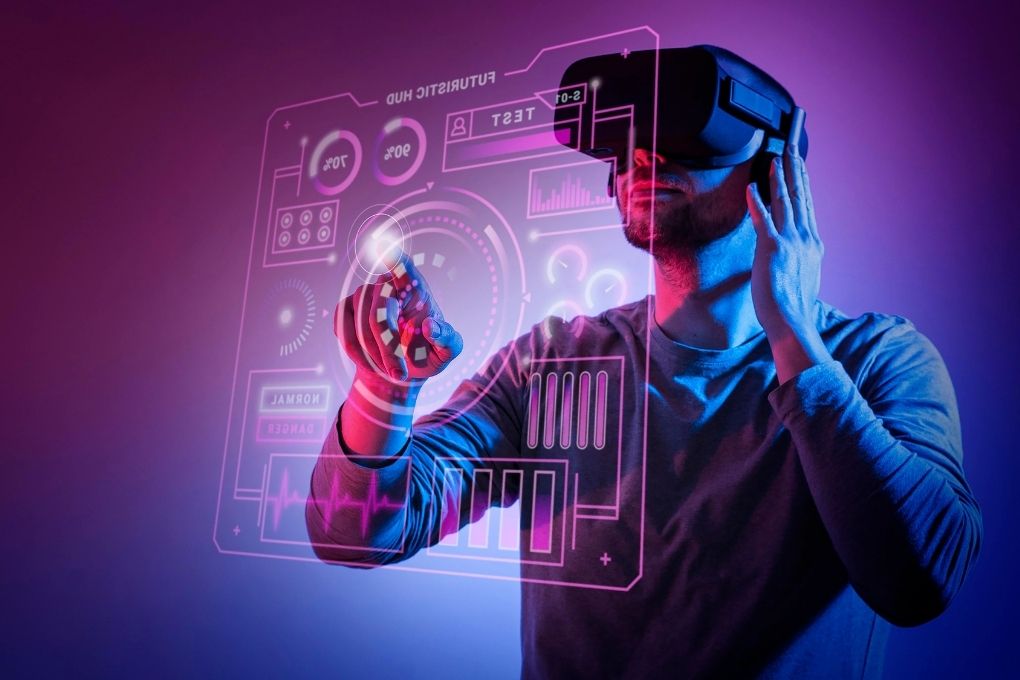
The Metaverse: Again, and it has already happened many times. Every so often, a word comes up that fills everything. Sometimes they come and go, and sometimes they stay. Expressions such as blockchain, NFTs, AIs are like Aloe vera, they are on everyone’s lips, in all campaigns, in all actions, and it is like a magical ointment for everything.
And this new word? Metaverse. What does it mean? What is it, and what is it for?. Metaverse definitions abound on Google; a spatial internet, internet 3.0, a decentralized digital world… well, this sounds pretty ethereal. So, is it something new, yes or no? Well, neither one thing nor the other. In reality, it is almost always a question of concepts.
Does the metaverse exist? The answer depends on what is conceived as such if for the user the metaverse is that spatial internet in which one can have an immersive experience, with physical spaces, shops, shows, real estate businesses, investments, exports, and ultimately a LIFE digital; similar to the one that is emulated in Ready Player One (Both in the book and in the movie) or the already classic Matrix, the truth is that it is not. This metaverse does not yet exist, and it does not exist for the same reason because the reader does not know about it yet. It is not yet a common idea in the mind of humanity. Unlike things like the internet or smartphones, regardless of the age range and origin of a human being, with rare exceptions, everyone knows or understands, even remotely, what it is and what people use it for. So that,
The other option, and the most enthusiastic, is that it does exist. But not only a single metaverse but many that are still under construction and that one day one of these digital worlds will become that; in the true metaverse, an actual parallel reality through which businesses, relationships, experiences, advertising, contracts, products, and services will move normally. It will be democratic, it will be shared, and it will be something that also lives in everyone’s mind.
In any case, the world’s leading technology companies are moving in this direction. So something happens, and they want to be there first. This is where the question gets interesting; Which metaverse will prevail? Can several coexist simultaneously with relative success? These seem to be the most relevant unknowns to answer. Among these proto-metaverses that we have already mentioned, some already stand out mainly for their audiences, although they are not systems that allow immersive experiences (VR, AR, MX). We are talking about massive platforms where (almost always in the field of video games) many things are happening more than the gaming experience itself, like Roblox, Minecraft, or GTA. We talk about concerts, events, business, product launches that have nothing to do with the game itself, and so on—mixing reality-real and digital. In this sense, these digital worlds already have millions of users, their currencies, and a great social activity.
On the other hand, there are other metaverses with the ideal conditions to become the leaders, and the point is that technology will prevail; that of large corporations such as Meta (ex-Facebook, which is undoubtedly a marketing statement) or Earth2 with centralized control, these metaverses are like other large businesses, a large central entity manages them. It gives users a framework to play, build and develop content. The battle is centered between companies with immediate access to the world’s network; Meta already has one billion active users on its social networks; Facebook, Instagram, Oculus, etc. Making most of those srss optimal gateways to the metaverse isn’t hard to envision. Microsoft owns Minecraft studio Mojang.
The other great option is decentralized systems, such as Decentraland or The Sandbox. They are virtual spaces, a parallel reality that you can currently access through virtual reality glasses and other immersive accessories. From the user’s point of view, can you imagine buying a plot on this type of platform to organize an event? How does it sound to generate income? All this is already possible thanks to these decentralized metaverses, which allow you to live this type of experience without limits.
Next, we are going to comment on some of the essential decentralized metaverses that currently exist and what are the multiple experiences that you can live in each of them.
Decenterland. It is one of the most booming decentralized metaverses currently. At the moment, it does not have the most realistic definition, but it allows you to hold events, brand promotions, crypto art galleries, and more. This virtual platform has its cryptocurrency, Ethereum, used to pay from virtual land in Decenterland to purchase goods and services.
The Sandbox. In this case, it is a video game that allows you to create a virtual world in which both blockchain, DeFi, and NFT technology are combined, all in 3D format. In it, you can design your avatar to be able to access the various existing games, and it also has its token and governance.
Somnium Space. This time, it is a virtual world reality (VR) built on the Ethereum blockchain. This platform allows the user experiences such as buying land, houses, and even virtual buildings, in short, a virtual world where you can do whatever you want. It is an immersive experience that allows users to explore, monetize and interact with other participants.
As for curiosities in the different metaverses that exist, a trend is revolutionizing within these digital platforms, crypto art, or also called: digital art, that is, NFTs. Currently, the metaverses are opening their doors to the world of digital art, and all this is possible thanks to technological innovation. Creators and collectors are allowed to display and sell their works of art. But NFTs are much more; they allow owners to obtain guaranteed and exclusive ownership of all types of digital assets; music, gifs, videos, and a long etcetera.
The big question for most readers will be: what is the difference between massive video games and a metaverse? Or, more specifically, between an experience like Decentraland and WoW (that is, a vast online video game MMO)? Well, the very end of development, its ultimate goal. In the case of video games, entertainment is their goal, even if it has a significant social experience. However, deep down, the metaverse has as its ultimate goal a social purpose, social in every sense of the word. That of creating a different society, complete, with the more areas of the natural world the better; economy, speculation, creation, metalanguage, conflict, social representation, belonging groups.
What is the metaverse? It’s hard to pin down. What do you want to be? Perhaps it is a more straightforward answer. That other world, what Alice finds on the other side of the mirror, or Neo when he touches the liquid crystal in the Matrix. Or where Percival flees when transporting to Oasis in Ready player one. The metaverse is the fusion of all the centralized digital needs and demands in a sensory and spatial experience far superior to the current ones. It is the beginning of something huge, complex, and full of challenges. Probably a separate civilization. Where digital entrepreneurs, brands, associations, and political parties fight for users’ attention, but with other rules.
Also Read : Ten Keys For Communication To Be a Real Growth Lever For Companies




